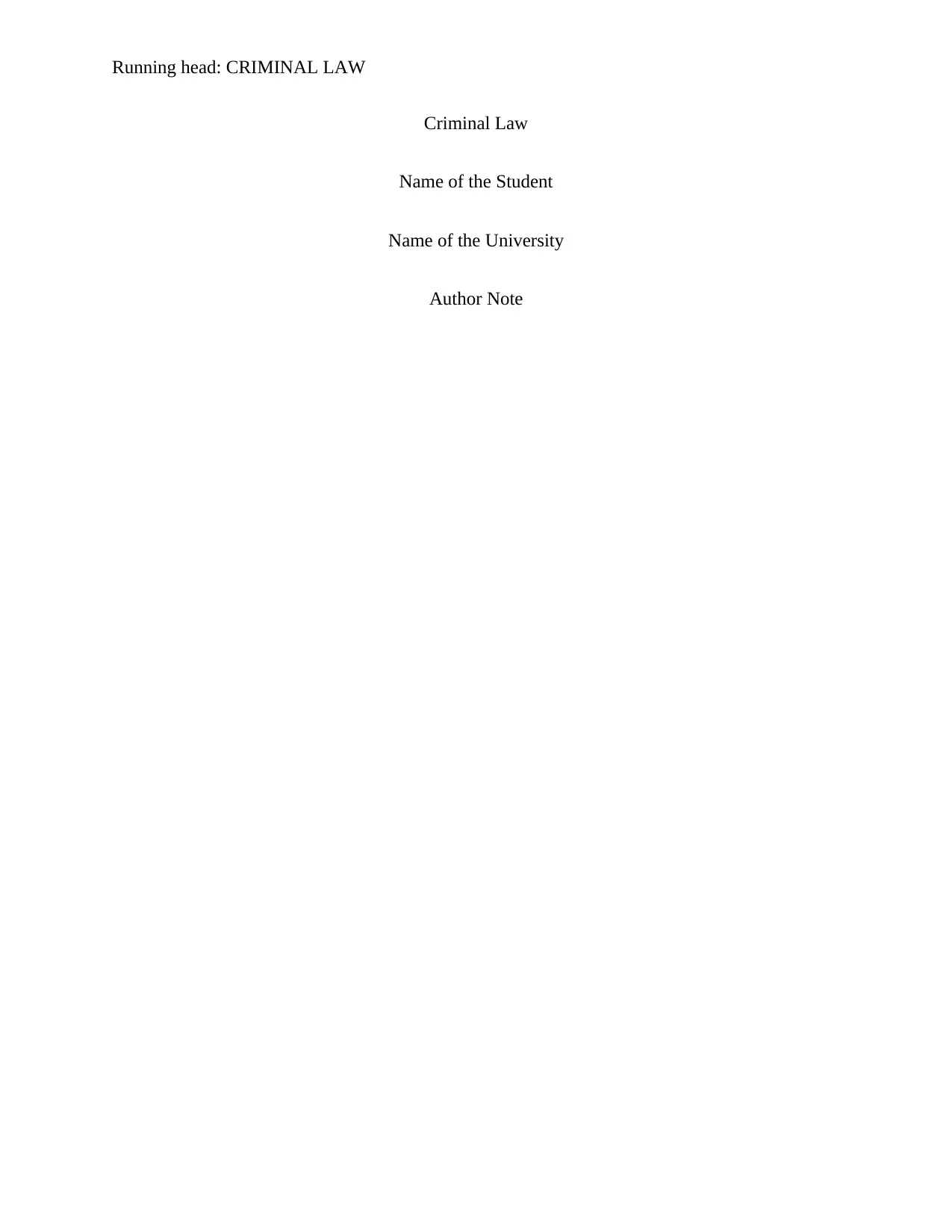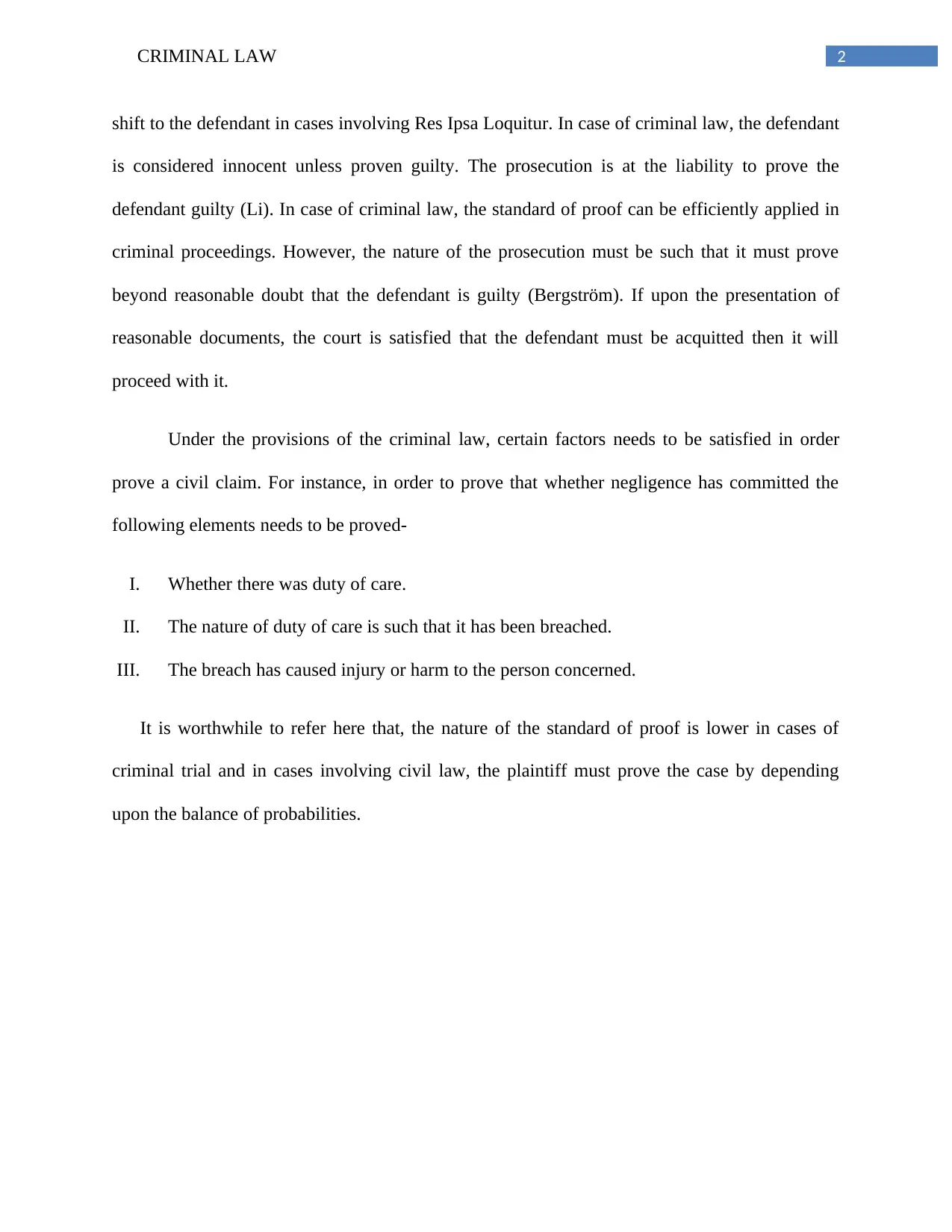Criminal Law: Social Functions, Morality, and Civil vs. Criminal Law
VerifiedAdded on 2023/06/11
|4
|687
|461
Essay
AI Summary
This essay delves into the multifaceted nature of criminal law, examining its social functions such as establishing standards, resolving disputes, maintaining order, and safeguarding individual rights and liberties. It addresses the complex relationship between law and morality, particularly in democratic societies like the United States, questioning whether legislation should reflect moral principles or be interpreted in relation to moral values. Furthermore, the essay distinguishes between civil and criminal law, highlighting differences in burden of proof, standards of evidence, and remedies, using the example of negligence to illustrate the elements required to prove a civil claim. The document is available on Desklib, a platform offering study tools and resources for students.
1 out of 4











![[object Object]](/_next/static/media/star-bottom.7253800d.svg)